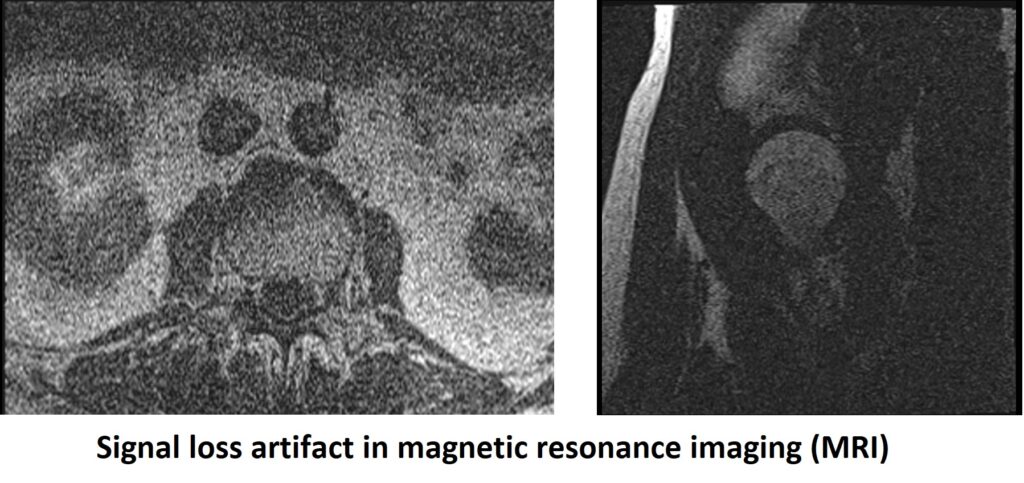Signal Loss Artifact
Signal loss artifact in magnetic resonance imaging (MRI) refers to a reduction or absence of signal intensity in certain regions of the image. This artifact can occur due to various factors and understanding them can help in minimizing or addressing signal loss artifacts.

Here are some common causes and strategies to address them:
Coil turned off: If a coil is inadvertently turned off or disconnected during the scan, it is important to pause the scan and address the issue. Check the coil connections, verify the power supply, and reposition the coil if necessary. Once the issue is resolved, it may be necessary to repeat the affected portion of the scan to ensure accurate image acquisition.

Coil connection and positioning: Ensure that all coils are properly connected and positioned according to the manufacturer’s guidelines and the specific imaging protocol. Loose connections or incorrect placement can lead to signal loss artifacts.
Magnetic field inhomogeneity: Variations in the main magnetic field (B0) across the imaging volume can cause signal loss artifacts. Optimizing the shimming process to minimize field inhomogeneities, ensuring proper calibration of the MRI system, and utilizing magnetic field mapping techniques can help reduce these artifacts.
Susceptibility effects: Signal loss artifacts can arise due to magnetic field inhomogeneities caused by variations in magnetic susceptibility between different tissues or structures. These artifacts are more likely to occur near air-tissue interfaces or in regions with metal implants. Minimizing susceptibility-induced signal loss can involve using appropriate imaging sequences, optimizing the receiver bandwidth, and employing techniques such as gradient echo imaging with shorter echo times.
